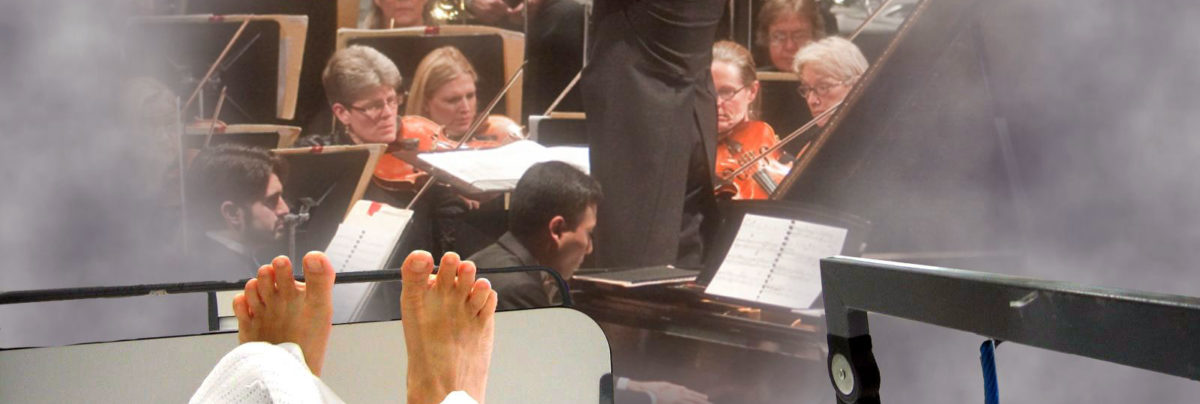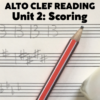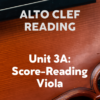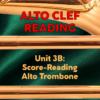I was hospitalised this year, but I quickly recovered. Around that time, I read lots of comments and posts about the externalisation of music: using DAW’s, whether a piano should be used in composing, and so on. Here is my commentary on the topic – how a trained inner ear can be used to compose, organise, and edit orchestral music. And how I reviewed a complex work in progress when I was at my most helpless and out of touch with the world.
Thursday, 6 April 2017. Flat on my back, lying in the Radiology Ward of Wellington Hospital. Everyone is being so very very nice to me: attentive, making sure I know when to breathe, how to position my body, and to lie down exactly so. The CT machine looks like an enormous Star Trek: The Original Series prop. I find myself wondering lazily if, should I go through the donut hole all the way, I’d end up in some other dimension.
The huge, crippling, dehumanising pain that slowly overcame me after breakfast is gone, but its echo lingers, like cosmic background microwave radiation. I am doped to the proverbial gills. It took hours for the painkillers to completely start to work, but those hours passed quickly as I slipped in and out of consciousness, lying in the emergency ward. Earlier, when I’d showed up at reception with my barf bowl and my constant muttering stride back and forth, they’d mercifully triaged me for immediate attention. All the way down the line, they kept asking the same questions: what did the pain feel like? where was it coming from? what had I eaten? did I have any allergies? sensitivities to medication? medical history? After a while, I started to wonder if anyone was bothering to write any of this down, as I stalked back and forth across my emergency cubicle, unable to lie down or sit. It was like having a group of inattentive students, none of whom were sharing their notes.
All of that is turning into an impossible blur now, as the CT machine clicks and buzzes, my bed glides forward, and a recorded voice politely requests that I hold my breath. The voice has that supremely blithe, confident kiwi accent which is absolutely sure that you’ll do what it says because it’s the most reasonable suggestion. The CT machine plays a strange little tune, as if humming to itself. It sounds like someone who forgot exactly how the tune “Happy Birthday to You” goes, but their vague recollection has become the little mantra that gets them through the day.
From radiology, I’m eventually moved to a short-term stay bed, where I’m informed that I’ve got a kidney stone lodged in my right ureter. Fortunately it’s not so large that it’s stuck in there, and it’s nearly ready to pass completely. All I need to do now is hang on, keep taking painkillers, and stay there for observation.
That leaves me, for the first time in months, maybe years, with absolutely nothing to do, floating in a semiconscious state; not really aware enough to think anything over, or tired enough to sleep. If I were stuck in traffic, then I’d be working on some plan or other mentally, or thinking ahead to what I needed to do, or simply enjoying the sensation of being in the moment. But I feel like I’m stuck in time. So I open the door on my works in progress, in particular my long-neglected piano concerto.
It’s an outcome of my training that I don’t forget things that I haven’t finished – at least, not musical compositions. They stick around for as long as I need them to. In fact, only two things will clear the memory banks: one is to dismiss the project entirely, to really accept that the idea will not come to fruition; the other is to complete the work as a score and get it out the door. That seems to move the memories from one part of my brain to the other – from a place where every detail is carefully preserved to another place where it’s allowed to slowly merge into all my other works, though I can probably restore a complete image of them with concentration.
The piano concerto is a particular project that I’ve never given up on, and tinkered with over the years. I first got the idea in San Francisco for a whirring, delicate twiddling of the fingers over the piano keys as the orchestra fluttered in a sighing, pointillistic texture alongside, gradually opening out into grander gestures. That was the core of movement 1, from which all other episodes could evolve. Movement 2 came many years later, a Chopinesque repetition of a single key, around which the piano would explore a series of rising and falling chords, constantly changing harmonic context as it cycled haphazardly through a series of modulations. Movement 3 was always a maybe: a very old, somewhat juvenile idea (as it seemed for some years) of doing mystery variations, with the theme completely hidden until the very end of the piece.
When I review memories like this, it’s not like rummaging through a filing cabinet. It’s more like opening a file on a computer. I have a memory of everything the musicians need to play, what they sound like, and how they all relate to each other. In one way, I can internally “hear” what this sounds like – and if I choose, I can imagine such sounds as a score and view the notation. But more than this, I can float over all the music in my imagination, taking apart sections and putting them back together, fine-tuning them, and setting a new approach. Sometimes I have several different versions, which I can reshape into developments and recapitulations – or simply abandon. I’ve dismissed far more music than I’ve ever composed.
The ultimate criteria are what the music says to me, intellectually and emotionally. Sometimes being extremely clear about those parameters logically invites everything else to fall into place, almost without thinking about it. At other times, I have to work carefully on selecting which idea, which development, which approach is the strongest – and this can take months and even years.
But I haven’t been putting off the piano concerto for those reasons. It hasn’t been difficult to know what to do next. Rather, it’s the very career that’s evolved for me that’s kept the concerto on hold. In a process of evolution by professional selection, those projects which could help support my family and lead to more artistic involvement have gotten the most attention, and those which don’t haven’t. I’ve composed many concert music projects over the past decade and a half, but they’ve always been carefully shaped to fit both my availability and the client/orchestra’s goals. There has to be something more at stake than just my need to create.
I know that I could make this piano concerto project work, though. It would take an enormous amount of planning, outreach, and coordination between different orchestras and soloists. In fact, it would take just about every favour I’ve got to call in. And I’m not ready for that yet. But that doesn’t ease the enormous enjoyment or sense of responsibility that my work has engendered.
As I lie in this hospital bed, I mentally review all three movements now. The puddle of medication in which I’m lying seems to give every memory a glowing sheen to it, a golden illumination. The first movement sketches are all as they should be. I look at them as if from a distance in their totality. Then I let them play with my virtual mental orchestra. I pick the least derivative setting of the opening theme, and the music starts with strings sweeping along, flutes and clarinets dotting the texture, and then the piano rippling in over the top. I choose the third way of getting out of the main theme, and the pianist sweeps over the keys at lightning speed as the line flows from hand to hand in groups of five notes. That little touch of bass clarinet is like a footbridge over an abyss, and keeps the echo from the upper strings from toppling.
Normally I’d start tinkering at this point, were I bringing up a work in progress like this to mind. But this is a rare occasion of complete contemplation, simply looking over everything without any need to create. I’m just reflecting at present. And what I get from this first movement sketch is how exciting it is to listen to it and feel the sense of huge momentum and velocity with such delicate and flowing lines. I set aside the more bashing episodes and float over to the second movement. That also feels right. Everything is in place. I run through all the modulations, choosing the sequence in which the orchestra has the most to say. That will probably become the final draft. It’s quite wind-heavy, though, and even a little coarse. And of course there’s that mental note to fix this version into smoother, more elegant voicings that are integrated with more strings. I’d do that right now if I weren’t on drugs – I can see how it should be done, but working it out isn’t where I’m at today.
I wonder what time it is. The nurse comes in to take my blood pressure and temperature. She keeps asking my name and date of birth, I suppose to make sure some other composer hasn’t snuck in and switched beds with me. The pain is coming back again, just the mildest of twinges, but the warning is a clear sign. So I’m dosed up again. This time I can feel the pain go away, as if layers are being stripped away every 2-3 seconds. I ask the nurse the time. She tells me it’s now 4:30 p.m. Apparently I’ve been sitting thinking over my concerto for hours already. And that makes me happy. This is the best entertainment I’ve had in months, better than any film or fancy dinner.
After she leaves, I go back to thinking about movement three. Now was that idea really so juvenile? Certainly the melody was, and the outcome was, to pull away the curtain at the very end and show the audience that all along they’d been entertained by the most banal of melodies, and even to rub it in their faces before going to a sarcastic finale cadence. But now I go back over each variation carefully. They’re to be numbered backwards, with a bridging coda coming out of the final relaxation of the second movement. Perhaps a dozen variations or more, depending on what I choose to finally include. Here’s where standing back and looking at everything from a distance is possibly hurting my impressions. I play that bridging coda with my internal philharmonic now, instructing the orchestra to get the most feeling and sincerity out of it. The banal melody is right there for anyone to notice, but they won’t notice amidst its completely arbitrary setting of the rhythms of the pitches. It sounds like a down-home bit of nostalgia, except for the way the melody notes at the end resolve to a 13th chord on VIb.
Then the first (numerically the last) variation starts, a complete retrograde adaptation. I choose the version that isn’t inverted in pitch first. It makes the most sense, but it might give things away too much. So I play through version IIB: inverted, with more dancing, aggressive yet aquiline grace from the soloist. That just feels right – but I have to be careful, because feeling right isn’t all there is to it. Then I put the impressionist/minimalist variation next, instead of the bouncy variation. That feels right as well, letting the pianist gush forth torrents of tiny fragmented figurations of the theme, while the lower strings arc through a complete reinterpretation in 5/4 time. Then the bouncy variation feels like kidding when it comes after it. Maybe it shouldn’t – I’m serious underneath, only pretending to joke.
I run through the rest of the variations one at a time, sometimes playing two different versions just because I can. It’s great to have a completely compliant, cooperative orchestra who’ll try out anything as many times as I need to get it right. Their time is mine to waste – but this isn’t a waste at all. We’re all having an enormous amount of fun. There’s no other way to play the final variations, (numbered 5, 4, 3, 2, 1) so I let them roll along, and then tack on the final naughty THEMA at the end. Yeah, it still feels silly, almost tacky, but in a cosmically perverse way. Maybe if the cosmic aspect of that perversity can be enhanced to the galactic, I can get away with it.
I let go of the concerto and it fades back to its OUT box. Someday, when the right soloists and orchestras come together, I’ll sit down with it and put everything in final order. I’ll make the hard choices of what to keep and what to dismiss, and turn this inner artistic process into an outer artistic work. Frankly right now I’m so medicated that I can’t be bothered to worry about when that will ever happen, or even if. But I’m so glad that I can do this thing – that when every bit of technology and ability to communicate has been taken away, there still remain the ideas, the sharp memories, the structures, and the inner ear. It’s my playground, which I built and enlarged slowly and deliberately from age 4, and it’s now the size of its own universe. It’s a privilege to run free upon its green meadows and drink from its clear streams, even if I’m unable to stand up or string together a coherent sentence in the normal universe we all share.
UPDATE to Monday morning, 10 April. Day is starting to break outside my studio window as I finish this diary entry, having risen at my usual 5:00 a.m. to write it. I was discharged from the hospital the next day, last Friday. I’ve spent most of the weekend sleeping and letting my body detoxify. My body and mind have become more and more orchestral over the past decade, functioning as if conducted when the score of my life is completely clear and readable. That means that I get large amounts of work done in shorter and shorter spans of time, but I’m more and more susceptible to things that make that life-score hard to read, especially chemicals in the bloodstream. Fortunately I’ve also learned to be patient about such interruptions, and more confident that the creative machinery will function smoothly again. As it seems to be this morning. It was great sharing this view of my process with you – and now, back to work!









